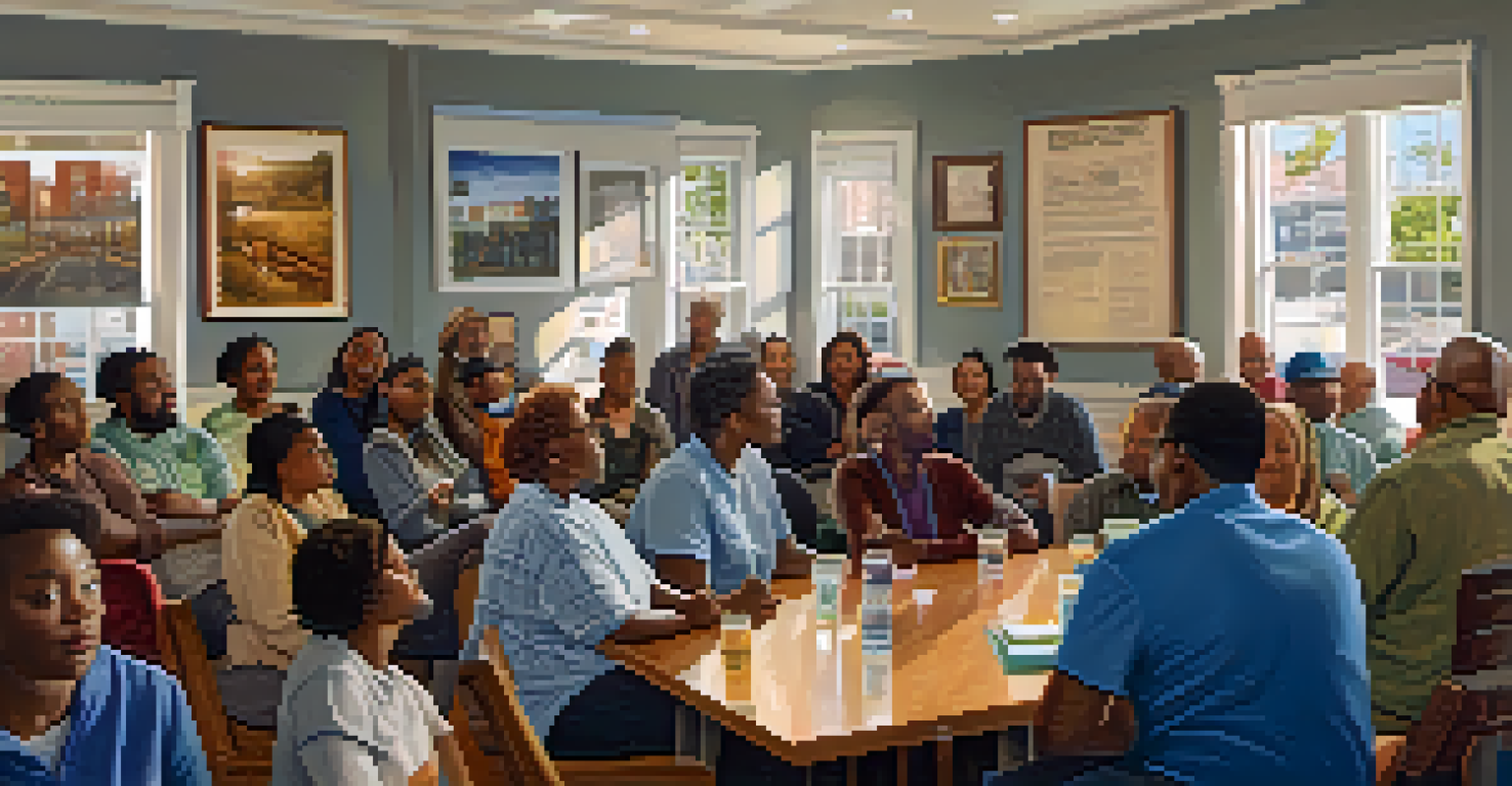The Impact of Gentrification on Public Safety in SF Neighborhoods

Understanding Gentrification and Its Roots in San Francisco
Gentrification is a complex process where wealthier individuals move into a previously lower-income neighborhood, leading to rising property values and rents. In San Francisco, this phenomenon has deep historical roots, often linked to the tech boom and urban revitalization initiatives. While it can bring new investments and amenities, it also displaces long-time residents and alters the community's character.
Gentrification is a double-edged sword; it has the potential to revitalize neighborhoods while simultaneously displacing long-term residents.
To put it simply, think of gentrification as a double-edged sword. On one side, there's potential for economic growth and improved infrastructure; on the flip side, many locals face financial strain and social displacement. This shift can create a stark divide between old and new residents, impacting community cohesion.
Understanding this backdrop is crucial because it sets the stage for examining how such changes influence public safety. As neighborhoods evolve, so do the dynamics of crime and community safety, making it essential to investigate the interplay between gentrification and crime rates.
The Relationship Between Gentrification and Crime Rates
A common belief is that gentrification leads to lower crime rates, as new residents often bring increased investment and policing. However, the reality is more nuanced; while some areas see crime decrease, others experience a spike due to tensions between different community groups. For example, the influx of wealthier residents can lead to conflicts over public space and resources, contributing to a sense of insecurity.

Moreover, studies show that crime trends can vary significantly from neighborhood to neighborhood. In some cases, as property values rise, certain crimes, like theft and vandalism, may become more prevalent, reflecting the changing demographics. This highlights the importance of not generalizing the effects of gentrification on crime across the board.
Gentrification's Complex Impact
Gentrification can drive economic growth but also displaces long-time residents and alters community dynamics.
Ultimately, understanding these patterns requires a closer look at the specific factors at play in each neighborhood. By doing so, we can identify the unique challenges and opportunities that come with gentrification and its impact on public safety.
Community Response to Gentrification and Safety Concerns
As neighborhoods gentrify, residents often mobilize to voice their concerns about safety and community integrity. Activism can manifest in various forms, from community meetings to organized protests aimed at preserving local culture and advocating for affordable housing. These movements reflect the residents' desire to maintain their identity amidst rapid change.
Effective policing in gentrifying neighborhoods requires an understanding of the unique dynamics at play, balancing safety with trust.
For instance, in areas like the Mission District, long-time residents have come together to push back against the displacement caused by gentrification. Their efforts highlight how community engagement can play a crucial role in addressing safety concerns while preserving the neighborhood's unique character.
This collective action not only fosters a sense of belonging but also creates a platform for dialogue between new and existing residents. By working together, communities can find common ground to address safety challenges while respecting the diversity that gentrification brings.
Policing Strategies in Gentrifying Neighborhoods
With gentrification often comes a shift in policing strategies. Law enforcement may increase their presence in newly gentrified areas to address safety concerns, which can lead to a more visible police presence. While this can improve feelings of safety for some residents, it can also create tensions with long-time locals who may view increased policing as a form of surveillance.
For example, some community members may feel that heightened policing disproportionately targets marginalized groups, leading to distrust between law enforcement and residents. This is where the challenge lies: balancing the need for safety with the importance of community trust and collaboration.
Community Engagement is Vital
Active community mobilization is essential in addressing safety concerns and preserving local culture amid gentrification.
Effective policing in gentrifying neighborhoods requires an understanding of the unique dynamics at play. Building relationships with community members and fostering open communication can help bridge the gap between safety and trust, ensuring that all voices are heard.
The Role of Local Government in Managing Gentrification
Local government plays a critical role in managing the effects of gentrification on public safety. Policies that promote affordable housing, community investment, and inclusive development can help mitigate some negative impacts associated with gentrification. For instance, implementing rent control measures can protect long-time residents from displacement, preserving the community's fabric.
Moreover, local governments can foster partnerships with community organizations to address safety concerns collaboratively. By engaging with residents, they can identify specific needs and tailor their responses accordingly, creating a more inclusive approach to public safety.
Ultimately, a proactive government can help ensure that as neighborhoods evolve, the safety and well-being of all residents remain a priority. This balance is crucial for fostering a sense of belonging in an ever-changing urban landscape.
Economic Disparities and Their Impact on Community Safety
As gentrification progresses, economic disparities within neighborhoods often widen, leading to increased tensions. Wealthier newcomers may inadvertently create an environment where long-time residents feel marginalized or unsafe. This economic divide can foster feelings of resentment and distrust, which can ultimately contribute to crime and public safety issues.
For instance, areas with stark income differences might see a rise in petty crimes, as those struggling to make ends meet resort to desperate measures. This highlights how economic factors are intrinsically linked to community safety and can complicate the narrative around gentrification.
Economic Disparities Affect Safety
Widening economic gaps in gentrifying neighborhoods can lead to increased tensions and public safety issues.
Addressing these disparities requires a multifaceted approach that includes economic development initiatives aimed at uplifting all community members. By investing in job training and education, neighborhoods can create opportunities that benefit both new and existing residents, fostering a safer and more connected community.
The Future of Public Safety in Gentrifying Neighborhoods
Looking ahead, the future of public safety in gentrifying neighborhoods will likely depend on ongoing community engagement and collaboration. As neighborhoods continue to evolve, it's essential for residents to advocate for their needs and work together to shape the future of their communities. This includes addressing safety concerns while promoting inclusivity and diversity.
Moreover, technology and data can play a significant role in enhancing public safety strategies. For example, community-led initiatives can leverage social media to report safety issues and foster open communication between residents and local authorities. This approach can create a more proactive stance on public safety, driven by community input.

Ultimately, ensuring public safety in gentrifying neighborhoods will require a concerted effort from all stakeholders. By fostering a sense of belonging and mutual respect, communities can navigate the challenges of gentrification while enhancing the safety and quality of life for everyone.